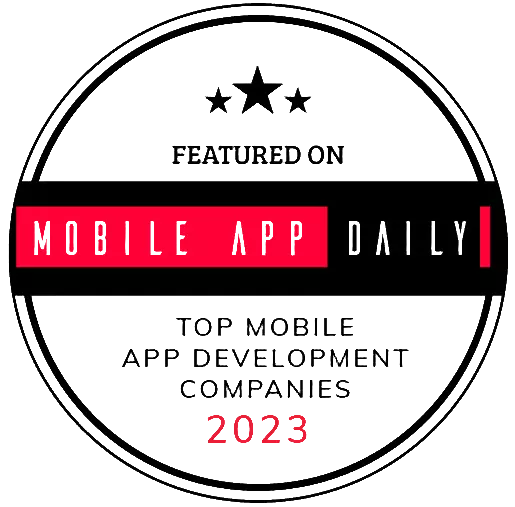Building a Cold-Chain Delivery System for up to 10,000 Aircrafts
Description
An air cargo carrier turned to Altoros to develop a proof of concept solution for monitoring temperature-sensitive pharmaceutical goods.
Brief results of the collaboration:
- With a microservices architecture and autoscaling, the customer built a system capable of monitoring temperature- and humidity-sensitive pharmaceuticals transported by up to 10,000 aircrafts.
- Thanks to asynchronous computations and anomaly detection, the carrier safeguarded real-time monitoring and incident reporting, as well as prevented false alarm in case of contradicting data is sent by sensors.
- A RESTful API enabled the company to provide other participants of the supply chain (manufacturers, warehousing, hospitals, etc.) with access to the monitoring process. This helped to establish transparency across all the parties involved.
The customer
Founded in 1923, the customer is one of the largest air cargo carriers in the Nordic and Baltic region. The company’s global presence covers 100+ cities in Europe, as well as 20+ in Asia and North America. In 2020, the carrier reported the revenue of €212 million.
The need
In 2015, the company started to plan the expansion of its services and aimed to offer pharmaceutical products shipment (e.g., vaccines). As the first step, the carrier got certified by the Center of Excellence for Independent Validators in Pharmaceutical Logistics (CEIV Pharma) created by International Air Transport Association.
As CEIV Pharma sets the standards for transporting temperature-sensitive medications, there was a need to establish a complying supply chain.
Relying on Altoros, the carrier wanted to develop a prototype that would identify the necessary functionality for a cold-chain system and validate its feasibility.
The challenges
Under the project, the team at Altoros had to address the following issues:
- To ensure the safety of pharmaceuticals and take immediate action in case of violating a temperature/humidity regime, it was crucial to analyze data from the sensors located in cargo containers in real time and alert about incidents.
- On average, a cargo plane can carry up to 30 containers, each having minimum two sensors. It was important for the prototype to scale up to process data from 50+ planes with 60+ sensors on board of each in the testbed.
- Transportation by plane is just one of the steps in the supply chain, which also involves manufacturers, warehousing, hospitals, and the logistics in between. This way, monitoring had to be transparent to the customer’s partners.
The solution
Stage 1. After analyzing the customer’s requirements, the team at Altoros suggested building a prototype as a set of 3 independent microservices, each responsible for a specific workflow. This way, it would be possible to simplify maintenance and easily add new functionality without rewriting the whole system. SAP Cloud Platform along with Spring Boot were chosen as underlying technologies offering mature functionality for microservices-based systems.
Stage 2. To enable autoscaling, the engineers utilized load balancers available in SAP Cloud Platform.
Stage 3. Using a time-series mechanism of SAP’s platform, developers at Altoros built a microservice that gathers data from temperature and humidity sensors. To minimize the request–response time between the system and sensors in the containers, our team enabled asynchronous computations and parallel execution of operations with Netty. As a result, it takes only 100 ms to read-write temperature and humidity data. Then, engineers at Altoros implemented anomaly detection and alerting across a temperature/humidity range in case a limit violation occurs or sensors send contradicting data. All those measures added to high availability, stable performance, and scalability of the system, making it possible to monitor up to 10,000 cargo aircrafts.
Stage 4. Our team built a RESTful API microservice, so that the customer could provide other participants of the supply chain with access to the monitoring process. Furthermore, the API allowed to integrate with third-party services, such as FlightStats.
Stage 5. To simplify system management and configuration, developers at Altoros delivered an inventory microservice. It allows to view a list of flights, check GPS trackers, set up notifications, etc.
Stage 6. Finally, our team consulted the carrier on integrating blockchain into the supply chain. The immutable nature of the technology would enable the participants to unbiasedly identify discrepancies or any fraudulent activities across the historical data.
100ms
request latency
10,000
aircrafts at scale
3,000
sensors in the testbed
The outcome
Together with Altoros, the air cargo carrier built a temperature/humidity monitoring prototype and validated its feasibility on 50 planes. Thanks to microservices-based architecture and autoscaling, the company ensured the system could monitor up to 10,000 aircrafts. With asynchronous computations and anomaly detection, the customer safeguarded that monitoring and incident alerting is in real time. The API helped the organization to provide other participants of the supply chain with access to monitoring, establishing transparency. The carrier moved onto creating a minimum viable product with new functionality and cutting-edge technologies.
Platform
SAP Cloud Platform
Programming languages
Java, TypeScript
Frameworks and tools
Spring Boot, Spring Data JPA, Hibernate, Angular, HTML5, Gulp.js, Bootstrap 3, Maven, Netty, Highcharts, Bower, Google Maps
Database
SAP HANA
Seeking a solution like this?
Contact us and get a quote within 24 hours


























